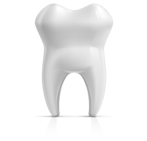Contact Information
Information for health professionals
There are a number of ways in which oral care can be promoted to those clients for which dental care may be complicated. Apart from fundamental dental care and health promotion for these people; professionals should promote and facilitate access to special governmental programs to improve access for these people.
Do not assume people know basic oral hygiene skills
Maintenance of an individual’s oral health through their personal hygiene requires that they have an appropriate level of resources, skill and understanding. Not all adults and children have been taught the correct procedure to clean their teeth. This is compounded by conditions that then affect movement, memory, compliance, and capacity to maintain oral health.
Determine the abilities of the client
The parent or carer of the client is the best source of information regarding intellectual and functional capabilities and tolerance. Communication can then also be tailored to a level appropriate to the client. This information should be included in any communication with other health/dental professionals with regard to this client.
Plan a short desensitization Appointment
Sometimes familiarisation with an environment prior to any kind of treatment can be beneficial in facilitating and less complicated appointment. The client can become familiar with the environment, staff and equipment over one or a number of visits. The use of a toothbrush and brushing of teeth (a familiar object) may be the best way to gain initial access to the mouth of a client.
Preventative measures for self-injurious behaviour
Those clients for whom self-injurious behaviour is problematic may benefit from a mouth guard if tolerated.
Facilitate improved attendance
If a client has difficulty in maintaining appointments some steps may be taken to help improve attendance such as reminder calls, reminder letters and/or direct contact with a carer.
References
DHS. (2003). ORAL HEALTH IS BETTER HEALTH Oral Health Guidelines for Victorians. Melbourne: Department of Human Services.
National Institute of Dental and Craniofacial Research. (2008). Practical Oral Care for People with Developmental Disabilities. Bethesda: National Institute of Dental and Craniofacial Research.
Identifying people who may have
complicated dental care
Dental Care is becoming increasingly polarised in Australia. Apart from social class – other factors and conditions may impact on a person’s ability to access dental care and maintain good oral health.
Low income
Access to dental services is difficult for people with low incomes. The public dental waiting lists are very long and private dental costs are often far outside the financial capabilities of this group. This means that these people often do not seek dental care and consequently oral health is poor.
People with Developmental Disabilities
People with developmental disabilities typically have more oral health problems than the general population. Contributing factors include poor oral hygiene, physical and mental disabilities. This group often have damaging oral habits. These include Bruxism (teeth grinding), food pouching, mouth breathing and tongue thrusting. These habits may also include self-injurious behaviours such as picking at the gums, biting lips, rumination (where food is chewed, regurgitated and re-swallowed) and pica – eating objects such as gravel, sand, cigarette buts or pens.
People with facial disabilities/anomalies
Some people may have oral malformations such as enamel defects, high lip lines with dry gums, variations in the size, number and shape of teeth, and malocclusion. Malocclusion may increase the risk of tooth decay and cause excessive pressure on the temporomandibular joint.
People with conditions that affect communication functioning
Some people that suffer from conditions such as Autism and psychiatric conditions such as Schizophrenia; have communication and behavioural problems that pose significant challenges in obtaining care for the client and providing care for the professional.
People with conditions that cause unusual and unpredictable body movements
These movements can jeopardize the safety of both the client and the oral health professional. Some conditions in which this may occur are Autism, Tourettes Syndrome, Parkinson’s disease, and Acquired Brain Injury.
Older people – particularly those institutionalised
Older people often have chronic and complex health problems. This often also means complex medications which may further impact on oral health (see section specific information). Older people often have misconceptions regarding their oral health including tooth loss being normal parts of ageing, denture wearers do not need regular dental checks, and dental decay is a disease of the young; dry mouth is always age related, you should only see a dentist when in pain and finally not everyone who smokes gets oral cancer so why cease smoking? Oral health remains important for older people as pain and difficulty eating can quickly lead to nutrition deficits, dry mouth associated with medications can affect appearance, speaking and eating; dental issues can lead to social isolation and self-esteem problems. Poor oral health may also complicate other health conditions such as diabetes, cardiovascular disease and respiratory health due to aspiration. Those older people reliant on others for oral care may not receive adequate care in this area.
People with cognitive impairment
People with cognitive impairment including dementia (poor memory, attention span and problem solving capability) may decrease the ability to learn and maintain the skills associated with oral health. Compliance issues with both oral care and attendance to dental appointments may also be impacted.
References
National Institute of Dental and Craniofacial Research. (2008). Practical Oral Care for People with Developmental Disabilities. Bethesda: National Institute of Dental and Craniofacial Research.
Spencer, J. (2004). Narrowing the inequality gap in oral health and dental care in Australia. Sydney: Australian Health Policy Institute: The University of Sydney.
Rural and Regional Health and Aged Care Services Division. (2002). Oral Health for Older People. Melbourne: State of Victoria: Department of Human Services.
Mental Illness: the impact on oral health
There are a number of factors that influence the oral health of mental health clients, with some of these factors mitigating against self care and negatively affecting routine access and provision of oral care. Poor oral health impacts negatively on nutrition, speech, appearance, self-esteem, social interactions and life opportunities. Treating this client group is also often difficult and time intensive due to complex treatment needs, the need for a break during treatment, unpredictable behaviour and difficulty in obtaining a medical history requiring consultation with other health professionals.
Type, severity and stage of mental illness
Fear, anxiety and dental phobia are significant factors which influence acceptance of dental care. Symptoms associated with psychotic illness may severely interfere with the acceptance of dental care, delaying treatment until tooth loss is inevitable. Access to prompt treatment under sedation and general anaesthesia is essential for those whose disability or anxiety limits their ability to co-operate for routine care.
Client’s mood, motivation and self-esteem
These are important factors that influence compliance with oral self-care and all aspects of personal hygiene. This is particularly notable in individuals suffering from dementia or memory loss. Lack of interest and low self esteem associated with the disorder are factors that contribute to inadequate self care and regular dental attendance. Depression is also often associated with a disinterest in oral self-care.
Lack of personal perception of oral health problems
This is related to a number of factors such as mood, motivation, self-esteem, ability to think logically, accept and understand the treatment plan, and ability to cooperate with dental treatment. Dementia affects and individual’s ability to accept dental care. For some, access to emergency pain relief will be the only requirement whereas others may be unable to cope or cooperate with treatment despite and urgent or perceived need. Mental Health Clients also often have poor knowledge of oral side effects of psychiatric medications despite high usage over long periods of time.
Client’s habits, life-style and ability to sustain self-care and dental attendance
People with mental health problems by virtue of their illness, disease, lifestyle or cultural practices are at greater risk or poor oral health. Oral health and dental management may also be compromised by medical problems associated with alcohol abuse, drug addiction, smoking, stress, eating disorders as well as prescribed medication. Behavioural factors may lead to poor compliance, unreliable attendance and late cancellations of appointments. Such behaviour is often a source of frustration and sometimes bewilderment, resentment and hostility to staff delivering the service.
Environmental factors which mitigate against preservation of self-care / Socio-economic factors which limit choices for healthy living / Language and culture
Chronic and significant oral health disease is noted in this group of the population with extensive unmet oral health needs, including high need for gum treatment, restorations and extractions. A legacy of institutionalism may mean that some patients have required full dental clearance. Fear, anxiety and inability to meet the perceived cost of treatment may contribute to irregular attendance. Dental treatment may have a low priority in the context of ill health, poverty or homelessness particularly if there is not perceived need.
Lack of information on how to access information or dental services
Lack of knowledge on how to access information or services as well as a fear of dental treatments are barriers to oral health care.
Oral side-effects of medication
Oral and systemic side effects of medication used in mental health illness are common and detrimental to the overall oral health of the client. The most common side effect is Xerostomia (Dry mouth) which has a significant impact on oral health and increased the risk of dental caries, periodontal disease and oral infections such as candidiasis, glossitis, and generalised stomatitis and in extreme cases may cause acute inflammation of the salivary glands. A client with this condition will often consume sugary drinks, lollies and food in order to increase salivation which in turn increases caries and gum disease.
Attitudes of health professionals / Dental team’s attitudes and knowledge of mental health problems / Local dental personnel unable or unwilling to provide adequate dental care
The attitudes, knowledge and skills of health professionals and the dental team in providing care for people with mental health problems may affect access to information and oral care services. Attitudes to and knowledge of causes and effects of oral disease among health professionals and healthcare workers are issues that have been identified as barriers for mental health clients. There may be a lack of or inadequate dental facilities and lack of support for continuity of dental care on discharge from hospital or residential care. There is a need for more extensive collaboration between mental health, social and oral health care sectors.
References:
Griffiths, J., Jones, V., Leeman, I., Lewis, D., Patel, K., Wilson, K., et al. (2000). Oral Health Care for People with Mental Health Problems: Guidelines and Recommendations. London: British Society for Disability and Oral Health
Burchell, A., Fernbacher, S., Lewis, R., & Neil, A. (2006). “Dental as Anything” Inner South Community Health Service Detnal Outreach to People with a Mental Illness. Australian Journal of Primary Health, 12(2), 75-82.
Yarra Oral Health. (2002). Oral Health for People with a Mental Illness. Yarra: North Richmond Community Health Centre.
Pharmacology Awareness
A number of medications can impact the oral health of clients. Studies suggest that about 40% of people take at least one type of medicine that affects oral health. Drugs associated with Mental Health in particular have a direct and indirect impact on oral health.
Behaviour Altering Agents
When medications that affect the central nervous system are taken for an extended period of time oral health can be negatively affected. As an example, psychotropic drugs may cause lethargy, fatigue and memory and motor impairment hamper a person’s ability to practice good oral hygiene. Centrally acting analgesics and antiepileptic drugs may also have this effect. Drugs may include Lithium Carbonate, Lithium Citrate, Carbamazepine, Epilim, Lamictal.
Agents that cause Dyskinesia and Dystonia
Dyskinesia and dystonia are distressing side effects of long term anti-psychotic medication characterised by abnormal, involuntary movement of the tongue or facila muscles, sometimes associated with abnormal jaw movements. Tongue protrusion and retraction, and facial grimacing are frequent presentations. These symptoms pose problems for patient, carer and the dental health team in providing routine dental care. Dyskinesia poses difficulties in the construction of retentive dentures and interferes with the client’s ability to manage and control dentures.
Medications that Alter Plaque composition and pH
When sugar is the major component of a medication such as in many liquid medications, the plaque composition and pH of the mouth may be affected. This in turn creates an increased susceptibility to dental caries. Examples include Liquid Sodium Valproate (Epilim) and Phenytoin (Dilantin).
Agents that Affect Salivary Flow and pH
Xerostomia, commonly known as “dry mouth” is a side effect of approximately 400 different medications. This condition is detrimental to oral health as saliva plays a major role in protecting both the soft and hard tissues in the mouth. Saliva reduces the population of bacteria in the mouth, cancels out decay-causing mouth acids and contains substances crucial to the ongoing process of re-mineralisation. Oral candidiasis is one of the major side effects of drugs that dry the mouth. These people also suffer from an increased incidence of coronal and root surface caries. Those medications that Mental Health clients may take that cause xerostomia include antidepressants, sedatives, centrally acting analgesics, anorexiants, anti-anxiety agents, and Anticonvulsants, antipsychotics, SSRIs.
Agents that Affect Oral Mucosa
Some medications predispose patients to erythematic multiform or lichenoid lesions. These conditions sometimes present as multiple aphthous ulcers. When medication associated they usually have an onset of days to weeks after commencement of the drug and resolve when the drug is ceased. The mental health drugs most commonly associated with this condition are barbiturates, Carbamazepine, and Phenytoin.
Agents that alter taste
Taste Alteration (also known as Dysgeusia) is associated with some medications. Taste changes may range from bitter to metallic. Mental Health Medications that may cause this condition include Dexamphetamine sulphate.
Agents that cause gingival enlargement
A number of medications cause gingival enlargement. Gum problems can lead to bleeding and ulceration of the gums and may lead to other dental problems such as tooth loss. Phenytoin was the first drug reported to have this effect with up to 62 % of clients reporting this side effect. Antidepressants and antihypertensive drugs. May also affect the gingival surfaces.
Agents that can affect alveolar bone
Long term use of some medications may result in osteoporosis, which is mainly seen in the long bones but may also occur in the alveolar bone. Clients taking enzyme-inducing antiepileptic drugs such as Phenytoin, Phenobarbital and Carbamazepine may experience lower bone mineral density.
References:
Ciancio, S. (2004). Medications’ impact on oral health. JADA, 135, 1440-1448.
Better Health Channel, & Australian Dental Association Victorian Branch. (2009). Teeth and drug use. Retrieved 14/3/2009, from http://www.betterhealth.vic.gov.au/bhcv2/bhcArticles.nsf/pages/Teeth_and_drug_use?OpenDocument
Griffiths, J., Jones, V., Leeman, I., Lewis, D., Patel, K., Wilson, K., et al. (2000). Oral Health Care for People with Mental Health Problems: Guidelines and Recommendations. London: British Society for Disability and Oral Health
The reality of dental fear
Over recent years there have been considerable advances in both pain control and patient management of dental fear however dental fear remains a serious issue for clients and oral health professionals. A recent Australian study found associations between dental fear and less frequent dental visiting, poorer oral health, and greater functional impairment. Dental fear becomes part of a downward spiral of circumstances that put the oral health of sufferers at high risk.
| Dental Fear |
| Dental Problems |
| Symptom Driven treatment |
| Delayed Visiting |
The vicious cycle of dental fear (Armfield, 2007)
The process of dental fear
A number of components have been found to contribute both to the presence of dental fear but also the severity of the fear
Threat of loss of autonomy/independence
- Fear of dying
- Fear of suffocating
- Fear of losing control
Vulnerability
- Traumatic life history
- Anxiety-prone personality
- Negative preconceptions about dental care
Unsupportive Dentist
- Perceived lack of empathy and respect
- Doubts about dentist’s skills
- Perceived lack of support from dental team
Threat of Violation
- Threat of violation
- Feelings of powerlessness
- Feelings of being deserted and vulnerable
Females vs. Males and dental fear
Research found that women report higher levels of dental fear in relation to specific stimuli and procedures. These include fillings, tooth extraction, a scale and clean, a check-up, gum treatment, and a dental crown or bridge.
Dental fear and socio-economic class
People from lower socio-economic backgrounds generally experience poorer oral health. It is yet to be established whether or not people from lower socio-economic backgrounds have higher levels of dental fear as a result of differences in dental treatment they receive.
Delayed visits
Studies show that 12 monthly or less visits to the dentist are associated with less dental fear. Those that visit the dentist once every two years or more rated themselves as very afraid.
Symptom Driven Care
Preventative oral health for people with dental fear is problematic. These people are less likely to make appointments for preventative and maintaining oral health. Appointments are usually only made and kept when the client is in pain or is experiencing a dental emergency.
Previous Trauma
It is logical to assume that people suffering from severe dental anxiety would have experienced a traumatic dental event that led to subsequent fear. However, studies show that many highly anxious people cannot recall a specific event, but relate their dental anxiety more with vulnerability and threat of violation (a mistake that causes pain) as a determination of the fear.
Appointments for clients with Dental fear.
A number of different methods and tools have been developed to help with the dilemma of dental fear. Some of these methods include:
- Developing a signal like a raised hand which the client can use to indicate they need a break
- The oral health professional taking the time to give thorough explanations to the client.
- Giving a client the opportunity to record their fears and preferences for dental care using a questionnaire which is then kept as part of dental records.
- Making sure that reception and other staff are aware of a client presenting that suffers from dental fear. Often fear can escalate while waiting therefore understanding staff may help the client to cope.
- Special needs clients including those with dental fear may need additional appointment blocks.
References:
Armfield, J., Stewart, J., & Spencer, J. (2007). The vicious cycle of dental fear: exploring the interplay between oral health, service utilization and dental fear. BMC Oral Health, 7(1), 15.
Armfield, J., Spencer, J., & Stewart, J. (2006). Dental Fear in Australia: who’s afraid of the dentist? Australian Dental Journal, 51(1), 78-85.
Klages, U., Sadjadi, Z., Lojek, L., Rust, G., & Wehrbein, H. (2008). Development of a questionnaire measuring treatment concerns in regular dental patients. Community Dental and Oral Epidemiology, 36, 219-227.
Abrahamsson, K., Berggren, U., Hallberg, L., & Carlsson, S. (2002). Dental phobic patients’ views of dental anxiety and experiences in dental care: a qualitative study. Scandinavian Journal of Caring Sciences, 16, 188-196.
 YOUR MOUTH
YOUR MOUTH  HARMING YOUR
HARMING YOUR  Recognising
Recognising  Improve Your
Improve Your  Meet Your
Meet Your Dental
Dental  Understanding
Understanding  Contact
Contact 